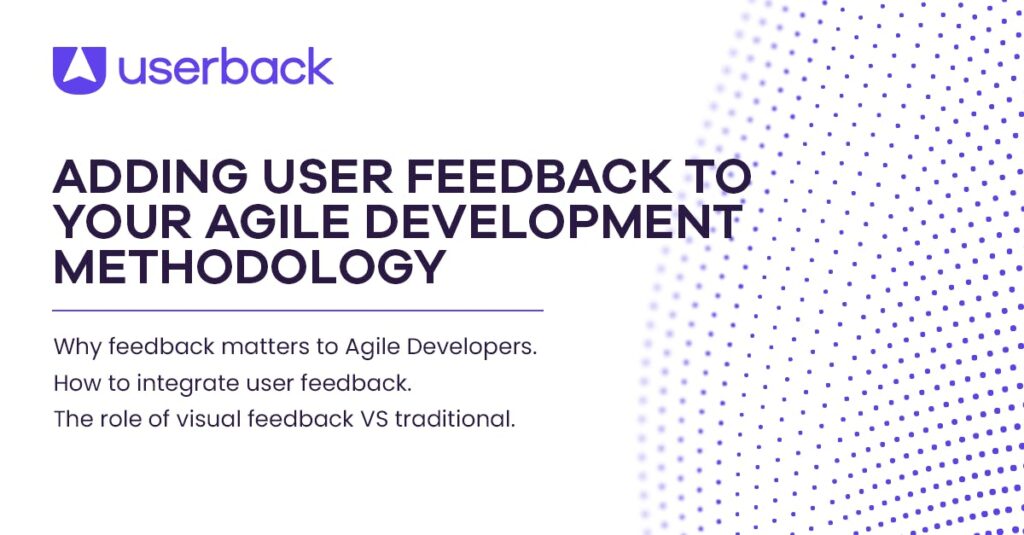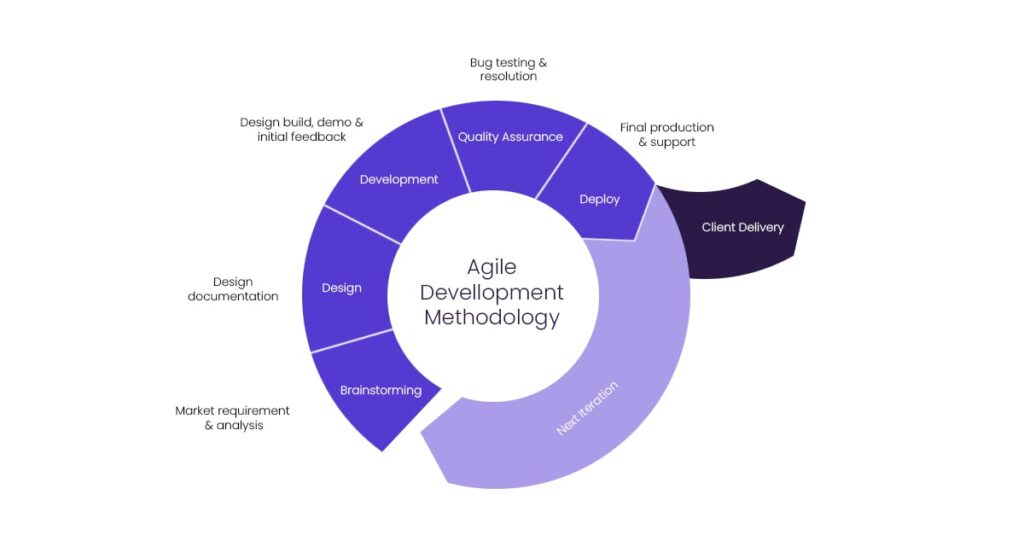The Agile development methodology has become increasingly popular in recent years. And for good reason—it’s a great way to get a product to market quickly and efficiently. However, there’s one crucial element that’s often missing from the Agile development process: user feedback. In this blog post, we’ll discuss why user feedback is so important and how you can integrate it into your agile development methodology.
Not on the Agile bandwagon just yet? Check out or steps for Waterfall or Rapid Application development methods.
What is the Agile development methodology?
The agile development methodology is an iterative approach to software development that emphasizes collaboration between developers and stakeholders, flexibility, and constant communication. The agile development methodology has become increasingly popular in recent years due to its ability to help teams release products quickly and efficiently. In essence, it breaks down a large project (sometimes called an ‘epic’) into more manageable elements (or ”stories”), allowing software teams to focus completely on the element at hand without distraction. If the well-known waterfall methodology is a step approach, then agile is most certainly a circular one in which Developers and Product Managers can craft and edit in collaborative, real-time processes with internal and external stakeholders.
One of the key principles of agile development is that user feedback should be incorporated throughout the development process in order to make sure that the final product meets user needs. However, in many cases, user feedback is only sought after the product has been released. This can often lead to costly rework and delays as teams scramble to fix issues that could have been avoided with user feedback. A great article to deep dive on Agile development can be found over at agilealliance.org
Why User Feedback is Important
User feedback is essential to the success of any product. It allows you to understand how users are actually interacting with your product and what their needs are. Without user feedback, you run the risk of building features that no one wants or needs. User feedback should be integrated into every stage of the product development cycle, from ideation to launch and beyond – this sits well with the Agile approach.
How to Integrate User Feedback Into Your Agile development methodology
There are a few different ways you can integrate user feedback into your agile development methodology. One way is to include a dedicated user feedback step in each iteration of your development cycle. Another way is to solicit user feedback on a regular basis (e.g., once a week or once a month) and use that feedback to inform your development priorities. Whichever method you choose, make sure you’re consistently collecting user feedback and using it to inform your decisions.
In a product’s very first iteration, before a line of code has ever been written, Product owners should engage in the brainstorming and market analysis stories in the traditional way, creating design briefs and prototypes based on an MVP product designed to fit the perceived market need or want. At first, this back-and-forth feedback will seem a lot and perhaps not sustainable when considering the desire to add in the additional voice of the user, not just the design and product philosophies of the original build team. But hang in there.
The remaining four steps are actually a lot easier to garner ongoing feedback via a user feedback platform‘, software designed to be on hand at the time of the user’s interaction with the product. Having a User Feedback Platform widget on your software or site in this Agile build approach
Feedback through Development is perhaps where most frustration and animosity occurs as clients or product visionaries try to communicate changes, bug fixes and a typically shifting wish list based on what has been built to date. With Agile Development, the trick is to not get caught up here and find efficiencies to improve the accuracy of feedback to eliminate miscommunication and frustration as poorly worded email requests are met with ‘cannot replicate’ responses through bug fixes, and cost-creep as meetings add untold hours onto the build cost. At this stage, the ability of a user feedback portal to collect user feedback in its visual form (through images with annotations) records user sessions for precise recreation of the steps leading to the bug or dead-ended user experience become paramount in speeding the development cycle and improving a products time-to-market.
Feedback through the QA stage is a no-brainer when it comes to user feedback, and historically this may be the only element where all sides actively think about user feedback. User feedback platforms with the continued use of a simple widget on the application or site here build on the experience associated with the development cycle, providing process information from user/QA to Product Manager and Developer to triage issues and get the application or website delivered to clients and users. At this point, user feedback tools should integrate with developer tools to create the tasks/tickets needed for Developer teams to function effectively and not miss that random email sitting idle in another point solution.
Feedback once delivered can traditionally be one of the major challenges for Developers and Product Managers, staying in touch with users once an application or website is built and released ‘into the wild’. However, software teams can maintain an intuitive, accessible touch point by continuing the use of the user feedback platform throughout, giving clients and users an opportunity to contribute to the next round of iterations, from bug fixes and triage to product feature requests and recommendations. Any user feedback platform chosen for this should provide Product Managers and Developers with functionality to support the collection, screening, prioritization and delivery of select features or bug fixes into the existing workflows of the software teams at the heart of the Agile development at hand. In doing so, feedback can be integrated into the next round of stories inclusive of those design and brainstorming elements that were missing user insight during round one.
At this stage, it’s time to go into iteration mode and begin the cycle over again, which thankfully teams now have the experience and the platform to streamline, the analysis and brainstorming can incorporate user feedback by stack ranking the user feature requests directly from the user feedback platform to create a user-requested roadmap where the market analysis is organically taken care of.
As for the design component, thanks to the visual feedback platform helping users capture design elements with 100% accuracy, it is able to be supported directly whilst allowing A/B testing on elements to create a better user experience.
In summary, User feedback is essential to the success of any product. It allows you to understand how users are actually interacting with your product and what their needs are. Without user feedback, you run the risk of building features that no one wants or needs. The good news is that it’s easy to integrate user feedback into your agile development methodology— simply include a dedicated user feedback step in each iteration of your development cycle or solicit user feedback on a regular basis (e.g., once a week or once a month). Whichever method you choose, make sure you’re consistently collecting user feedback and using it to inform your decisions.
Trusted by over 20,000 software teams and counting, Userback is the best way to get the user feedback you need to support an Agile development approach. and see how Userback can help you take your SaaS development to new heights!



